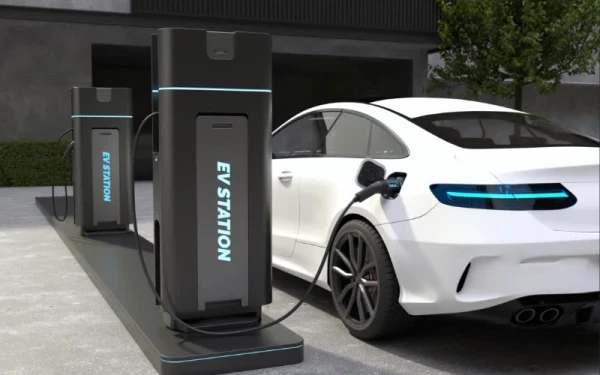Tokyo Motor Show EV and PHEV highlights
Add bookmarkAlthough the Tokyo Motor Show only comes around every other year, the event is a staple of the motoring calendar.
The reason is that the event always brings out the best in the domestic manufacturers, who take the chance to demonstrate concepts with a depth of innovation rarely seen outside Japan. The show has suffered in recent years with dwindling attendance from OEMs, which is why its rebranded as more of a mobility showcase for 2019.
- READ MORE: Frankfurt Motor Show EV and PHEV highlights
With the Olympic Games on the horizon for next year, the show also offers carmakers a chance to preview mobility solutions that will be used during the event.
Here’s a run-down of some of the key debuts:
Honda Jazz/Fit
The fourth generation of Honda’s supermini is going hybrid, in Europe at least. In order for Honda to meet its pledge of making its entire Euro line-up at least partially electrified by 2022, next year’s Jazz uses a petrol engine and twin e-motor set-up downscaled from the larger CR-V.
The firm hasn’t yet confirmed the tech specs for the new supermini, but has revealed the car’s design is very much an evolution of the current model, somewhat reducing the impact of the adoption of the innovative powertrain. However, one neat design touch is that the A-pillar is half the size of the outgoing car’s, bringing a much-welcome boost in forward visibility.
Lexus LF-30
A proper concept – one that doesn’t preview a specific upcoming new model – is a rarity these days, so hats off to Lexus for giving us the LF-30, the firm’s vision of what its cars might look like a decade from now.
Tech highlights include four in-wheel motors, steer-by-wire, and augmented reality instruments. Wireless charging, regulated by the on-board AI assistant, is also included, giving a claimed 500km range.
Lexus Posture Control is also included. It regulates the driving experience according to the driver’s mood, and this latter technology is set for production.
Although Lexus has been ahead of the curve with hybridization, its EV plans have been somewhat slower to materialize. However, the firm confirmed a November debut for its first EV.
Mazda MX-30
Mazda is getting into the EV game with its MX-30 crossover, which is due to hit roads in early 2021. The car’s positioning is interesting, very much designed to offer a gentle transition for people perhaps nervous of switching to electric power. For example, its design is very reminiscent of a conventional crossover, and includes suicide-like rear doors as used on the firm’s old RX-8 coupe.
The MX-30 is deliberately tuned to limit regenerative braking, giving a drive more akin to an ICE-car drive. However, the EV won’t set any range records – its 35.5kWh battery pack gives a range of 130 miles – and while way more than the European average daily distance, won’t do much to diffuse range anxiety that’s likely a much bigger turn off for those considering a switch to an EV.
Mitsubishi MI-TECH concept
Having made decent sales strides with its Outlander PHEV, Mitsubishi used the show to double down on its pledge to introduce a host of new plug-in crossovers by 2022. The MI-TECH concept was unveiled to underscore that statement, and takes the format of a small PHEV crossover, giving a good idea of what the next ASX will look like when it arrives in 2021.
The powertrain of the concept is unlikely to make production, so no claims about range or efficiency were made. Still, its use of a gas turbine to provide electricity for four motors, two on each axle, is novel. The MI-TECH also features electric brake calipers, which the firm claims boosts handling responses.
Nissan Ariya EV concept
Nissan has long been rumoured to be working on a crossover version of its Leaf EV, so it’s probably fair to assume that the Ariya concept is a preview to that car’s arrival in the not-too-distant future.
The car introduces some refreshed design themes, and includes the firm’s level 3 autonomous ProPilot 2.0 technology that recently launched in the Japan-market Skyline. Nissan stopped short of confirming powertrain details, except for the fact that the Ariya uses an e-motor on each axle to give all-wheel drive.
At the show, the Ariya was revealed alongside Nissan’s IMK concept – designed to give an idea of what Nissan is thinking for small-sized urban electric cars.
Suzuki Waku
There are no details to share about the Suzuki Waku concept’s PHEV powertrain, but who cares when it looks this fun. At the press of the ‘Waku Waku’ – or ‘excitement’ in English – button, the car converts between estate-style and coupe bodies (the area in black on the right of the image above), giving more space or a sportier look respectively.
Also on display was the Suzuki Hanare, an autonomous pod designed to provide a work or resting space for passengers on long journeys.
Toyota e-Racer concept
Although it’s easy to focus on the self-driving future, Toyota used the show as an excuse to preview its ideas for how driving fun will evolve over time. Its e-Racer is a two-seater that augments the driving experience with a racing experience, provided via what the firm calls “specialized digital glasses.”
The concept also features a ‘virtual fitting function’ that creates a racing suit customized to the driver’s body shape.
Also on show are Toyota’s e-Palette and Micro Palette autonomous delivery vehicles, the e-4ME single-seat mobility service, and even a e-broom designed to remind people that future mobility is supposed to be fun.






























